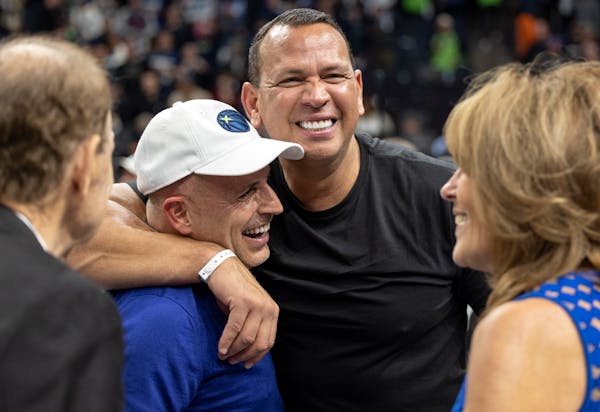 See
more of the story
See
more of the story
In early July the Timberwolves, ignoring Minnesota PTSD (Player Trades Spurring Depression), traded five players and four first-round draft picks to Utah for star center Rudy Gobert.
For those who remember the Vikings' trade for Herschel Walker, Gobert looks like a 7-foot-1 risk.
In 1989, Vikings General Manager Mike Lynn, looking for the one player who would elevate his team to a Super Bowl, traded five players and eight draft picks to Dallas for Walker and four future, low-level draft picks. That would become the most infamous and lamented trade in Minnesota history, a national punchline, and the ghost that would immediately haunt the Wolves' large gamble.
I covered the Walker trade in Dallas in 1989, and in Minnesota for the remainder of Walker's Minnesota stay. Here is why the Gobert and Walker deals are nothing alike:
1. The Wolves aren't getting fooled. Lynn was a successful, veteran GM. He was negotiating with Jimmy Johnson, a rookie NFL head coach who had a lousy roster and had yet to win a game in early October. Lynn assumed that if he constructed a deal that would give Johnson a choice between keeping veteran players or draft picks, Johnson would be so desperate to immediately improve that he would choose the players and give back the picks.
That was Lynn's intent: Trading good-not-great players for Walker, and keeping the picks. Johnson told me the day after the deal that he intended to keep the picks, and would offer Lynn some throwaway draft picks to keep the players, as well.
Johnson out-thought Lynn. The Wolves are not getting fooled in the Gobert deal. They expect to be good enough that the first-round picks they gave up will not be all that valuable.
2. The Wolves have a sound plan. The mistake that led to the mistake that was the Walker trade was Lynn never vetting with coach Jerry Burns whether Walker would fit into Burns' quick-pass, quick-cutting offense. Walker was a classic I-formation, run-to-daylight back. He didn't fit anything Burns wanted to do.
Wolves' coach Chris Finch is a respected strategist who can't wait to play Gobert next to Karl-Anthony Towns. The Wolves would not have traded for Gobert if their coach didn't think he could make this work.
3. Walker was in decline. Walker was a workhorse running back in high school and at Georgia before becoming a workhorse in the USFL and for the Cowboys. In 1988, he had 361 carries and 53 catches for 414 touches. The most touches ever by a Vikings' back: 388 by Adrian Peterson in 2012. Walker was battered by the time he wore purple, and he played like it.
Gobert is 30 and has carried a large frame around for a long time, but no athletes age faster than NFL workhorse running backs.
4. Gobert doesn't need the ball. The task for Walker and Gobert was the same: Elevate a good team. The difference is that Walker needed to become the focal point of the offense to thrive, and Gobert can cure what ails his team without ever having a play run for him.
He's a dominant rebounder and defender. He's also historically efficient offensively and should wind up with point-blank shots when teams collapse on his talented teammates, leaving him free for passes and offensive rebounds.
5. Connelly and Lynn are not alike. Lynn was more of a businessperson and promoter than a talent evaluator. The Wolves' front office is run by Tim Connelly, who prides himself on his scouting background, and Sachin Gupta, an analytics whiz, and new Vice President of Basketball Operations Matt Lloyd, who is considered a quality talent evaluator.
Lynn was playing fantasy football when he added Walker. The Wolves are more rooted in reality.
6. Age. Lynn was desperate to win immediately with a talented and aging roster. Gobert's arrival should make the Wolves contenders for the next four years. Towns is 26 and signed long term. Anthony Edwards is 20. Jaden McDaniels is 21. D'Angelo Russell is 26.
Gobert has a chance to fit in well and win big. Compare these trades at your own risk.







